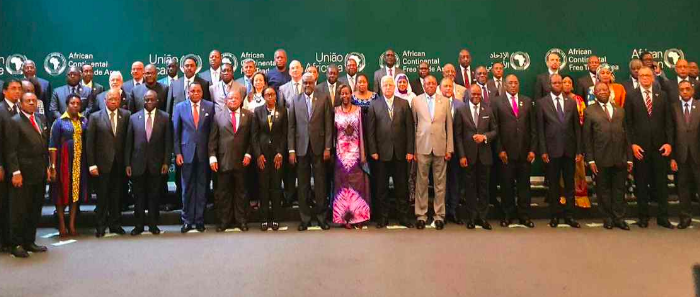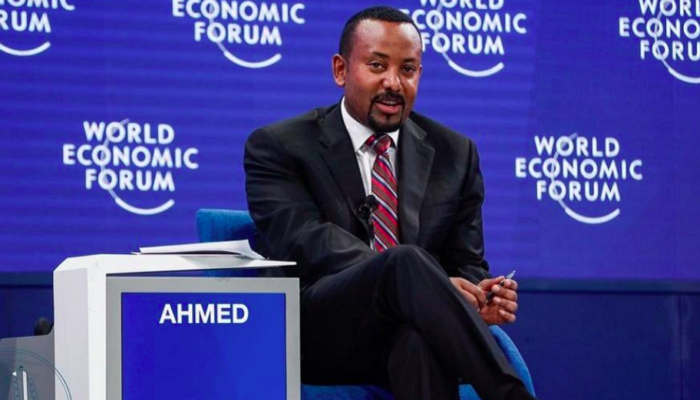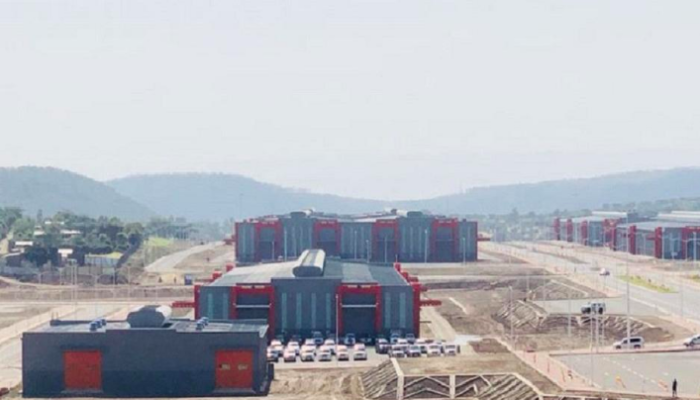The African Continental Free Area (AfCFTA) is a vital step for boosting intra-African trade. Eighteen countries have ratified it so far, and it is highly expected that 4 more will to do so in the coming months – to meet the 22 ratifications required.
From around 750 CE, the town of Gao in modern-day Mali played a crucial role in the trans-Saharan trade route. The town, which lies on the Niger River, thrived as a major trading centre for gold, copper, salt and slaves travelling north towards modern-day Libya.
The town’s importance and wealth diminished when Portuguese explorers in the 15th century opened up new avenues for trade via sea, before the French colonisation of Mali ended much of the empire’s trade with its northern neighbours.
Today, the trans-Saharan trade routes are mostly used by Berber nomads and a sparse number of trucks carrying fuel and salt. The African Union (AU) and African Development Bank (AfDB) have proposed extending the Trans-Sahara Highway from Algiers in Algeria to Lagos in Nigeria via Tamanrasset.
The project reflects a desire to reignite intra-African trade, which was stymied for many African countries during the colonial era. Trade between African nations stands at 18% of total regional trade, compared to 59% in Asia and 69% in Europe.
The African Continental Free Trade Area (AfCFTA), which has been signed by 49 African countries and could boost African economic output to around $29 trillion by 2050, is a vital step in boosting trade among African countries, according to one of the architects of the agreement, David Luke, coordinator of the African Trade Policy Centre (ATPC) at UNECA.
“The reason intra-African trade is so small is that colonialism forced Africans to export their raw materials outside of the continent to Europe and the US; therefore, much of the trading infrastructure was built with this in mind,” he says. “The AfCFTA is a new paradigm which lets African nations reduce tariffs and non-tariff barriers such as red tape and inconsistent standards for products, which will help boost economic activity across the continent.”
The benefit of the deal is clear. However, to date, only 12 out of the required minimum of 22 member states have ratified the accord. The AU had hoped the agreement would be ratified by the end of 2018. The AfCFTA has six main protocols, including rules on trade in goods, trade in services, rules and procedures on dispute settlement, competition policy, investment and intellectual property rights. All the protocols have to be agreed upon by member states by January 2020 for the full adoption.
While some critics have voiced concerns about the pace of ratification, defenders of the deal believe that significant progress has been made, including Vera Songwe, executive secretary of the UN Economic Commission for Africa (UNECA).
“I believe we are doing very well in terms of ratification of the deal and I’m confident that we will reach the minimum threshold by the middle of 2019 despite the fact that Nigeria is yet to sign up to the agreement,” she says. “There is definitely momentum behind the deal but we need to ensure that we are ready to implement the next part of the strategy the day after it is enacted.”
President Muhammadu Buhari of Nigeria announced that the country would delay signing up to the accord pending further discussions with local trade unions and the business community. The absence of Africa’s largest economy has led some to question the viability of the deal. However, Buhari’s decision is based on a political calculation rather than a lack of faith in the deal, says Gerhard Erasmus, co-founder of the South African-based Trade Law Centre (TRALAC).
“There are very powerful lobby groups who would prefer that Nigeria doesn’t enter into any regional trade arrangements that could challenge their interests,” he says. “And, with the elections coming up next year the incumbent President Muhammadu Buhari has indicated that he is quite sensitive about domestic opposition for this agreement and the official line is that they are consulting the relevant players.”
It seems that it will only be a matter of time before Nigeria – which actually chaired the negotiations that eventually led to the AfCFTA – signs up, with government officials, such as vice president Yemi Osinbajo making positive statements about the deal.
The agreement has, however, received a major boost after South Africa’s parliament ratified it in December. South Africa’s total trade with Africa amounted to R421bn ($30bn) in 2017, with exports amounting R311bn and manufactured goods accounting for 64% of exports to the region. The continent’s second-largest economy and the largest contributor to intra-Africa trade is expected to submit the approved instrument of ratification at the 32nd Ordinary Session of the Assembly of the AU in February 2019.
Reforms
Most African businesses pay an average of 6.9% tax on cross-border transactions and that does not include the additional costs of non-tariff barriers such as excessive bureaucracy, regulatory discrepancies and delays. The agreement calls for member states to cut tariffs on 90% of goods traded. However, removing tariffs is only the first step. Serious reforms will need to be implemented by member nations signed up to the agreement.
“I’m not one of those that believe that suddenly when this agreement is ratified, there will be an explosion of booming inter-African trade,” says Erasmus. “Trade agreements around the world only work when there is a consistent, well-designed effort to improve governance and transparency and, most importantly, there is a private sector producing tradeable goods that other countries want to buy.”
“Therefore, African policymakers need to address nontariff barriers to trade, such as limited industrialisation, weak productivity and poor infrastructure,” he adds.
The success of the agreement hinges on African countries implementing pro-private sector reforms and diversifying their economies. While countries including Tanzania, Kenya, Uganda and South Africa have similar diversification levels to other emerging markets, oil export countries such as Nigeria and Angola have become more dependent on revenues from commodities.
Nevertheless, if endorsed by all the countries of Africa, the AfCFTA would potentially create the largest free-trade area in the world, and leverage Africa’s surging population and a combined GDP of more than $3.4 trillion. However, the agreement is only an enabler. Governments need to create the ideal environment to allow trade to flourish.
Credits to: Taku Dzimwasha (African Business Magazine)






